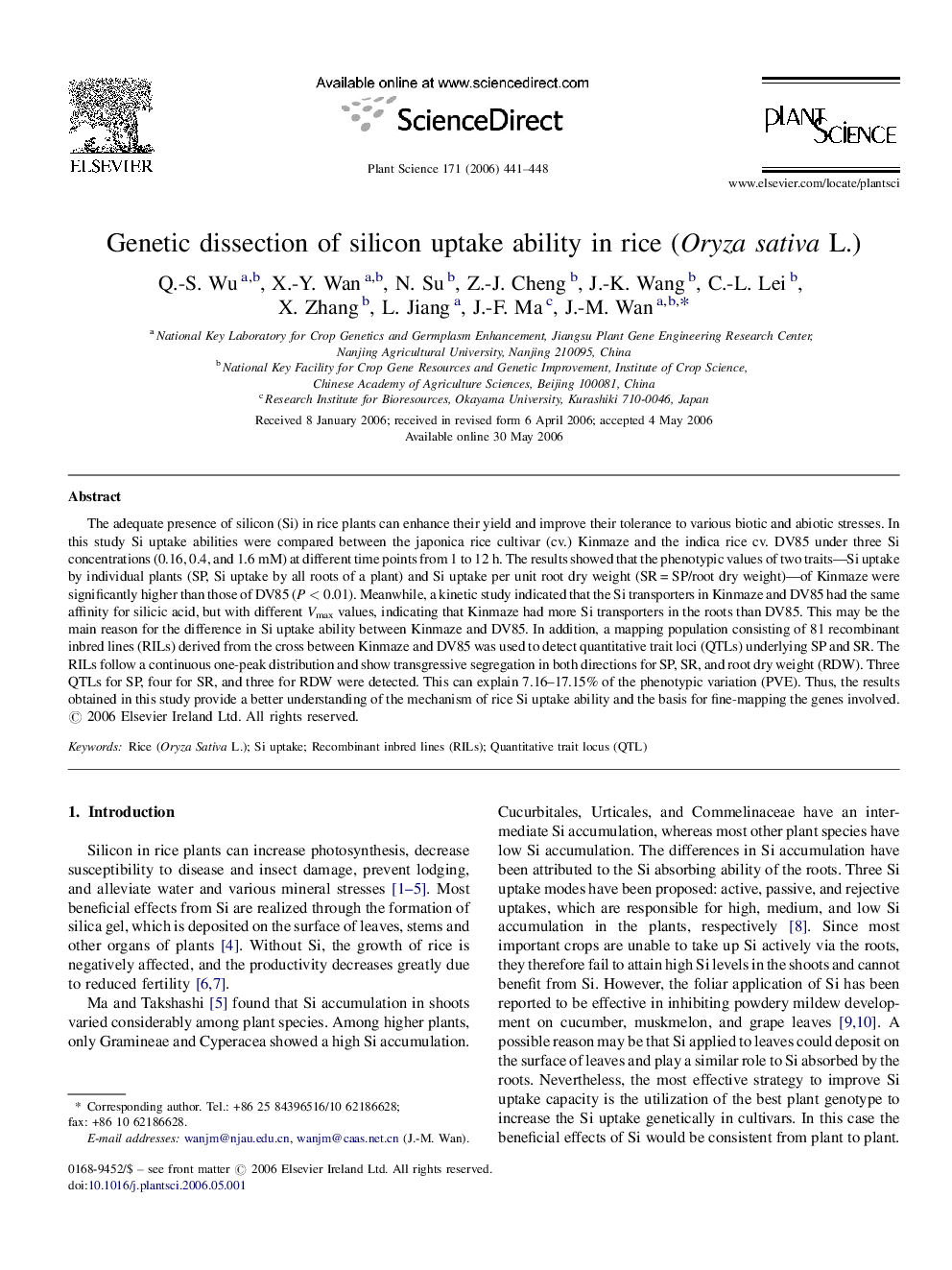| Article ID | Journal | Published Year | Pages | File Type |
|---|---|---|---|---|
| 2018819 | Plant Science | 2006 | 8 Pages |
The adequate presence of silicon (Si) in rice plants can enhance their yield and improve their tolerance to various biotic and abiotic stresses. In this study Si uptake abilities were compared between the japonica rice cultivar (cv.) Kinmaze and the indica rice cv. DV85 under three Si concentrations (0.16, 0.4, and 1.6 mM) at different time points from 1 to 12 h. The results showed that the phenotypic values of two traits—Si uptake by individual plants (SP, Si uptake by all roots of a plant) and Si uptake per unit root dry weight (SR = SP/root dry weight)—of Kinmaze were significantly higher than those of DV85 (P < 0.01). Meanwhile, a kinetic study indicated that the Si transporters in Kinmaze and DV85 had the same affinity for silicic acid, but with different Vmax values, indicating that Kinmaze had more Si transporters in the roots than DV85. This may be the main reason for the difference in Si uptake ability between Kinmaze and DV85. In addition, a mapping population consisting of 81 recombinant inbred lines (RILs) derived from the cross between Kinmaze and DV85 was used to detect quantitative trait loci (QTLs) underlying SP and SR. The RILs follow a continuous one-peak distribution and show transgressive segregation in both directions for SP, SR, and root dry weight (RDW). Three QTLs for SP, four for SR, and three for RDW were detected. This can explain 7.16–17.15% of the phenotypic variation (PVE). Thus, the results obtained in this study provide a better understanding of the mechanism of rice Si uptake ability and the basis for fine-mapping the genes involved.
